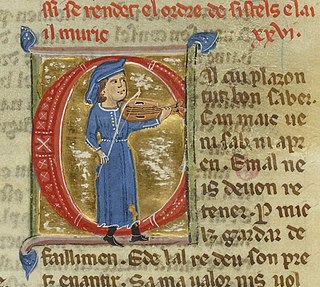
A troubadour was a composer and performer of Old Occitan lyric poetry during the High Middle Ages (1100–1350). Since the word troubadour is etymologically masculine, a female equivalent is usually called a trobairitz.
Occitan literature is a body of texts written in Occitan, mostly in the south of France. It was the first literature in a Romance language and inspired the rise of vernacular literature throughout medieval Europe. Occitan literature's Golden Age was in the 12th century, when a rich and complex body of lyrical poetry was produced by troubadours writing in Old Occitan, which still survives to this day. Although Catalan is considered by some a variety of Occitan, this article will not deal with Catalan literature, which started diverging from its Southern French counterpart in the late 13th century.
The sirventes or serventes, sometimes translated as "service song", was a genre of Old Occitan lyric poetry practiced by the troubadours.
Tibors de Sarenom is the earliest attestable trobairitz, active during the classical period of medieval Occitan literature at the height of the popularity of the troubadours.

The (Lo) Monge de Montaudon, born Pèire de Vic, was a nobleman, monk, and troubadour from the Auvergne, born at the castle of Vic-sur-Cère near Aurillac, where he became a Benedictine monk around 1180. According to his vida, he composed "couplets while he was in the monastery and sirventes on subjects that were popular in the region."
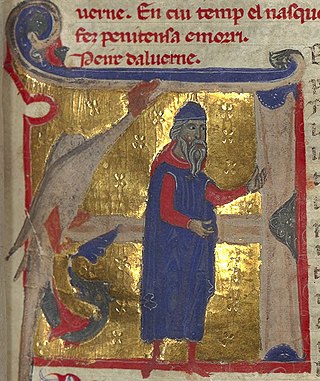
Peire d'Alvernhe or d'Alvernha was an Auvergnat troubadour with twenty-one or twenty-four surviving works. He composed in an "esoteric" and "formally complex" style known as the trobar clus. He stands out as the earliest troubadour mentioned by name in Dante's Divine Comedy.
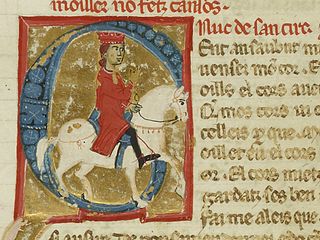
Uc de Saint Circ or Hugues (Hugh) de Saint Circq was a troubadour from Quercy. Uc is perhaps most significant to modern historians as the probable author of several vidas and razos of other troubadours, though only one of Bernart de Ventadorn exists under his name. Forty-four of his songs, including fifteen cansos and only three canso melodies, have survived, along with a didactic manual entitled Ensenhamen d'onor. According to William E. Burgwinkle, as "poet, biographer, literary historian, and mythographer, Uc must be accorded his rightful place as the 'inventor' (trobador) of 'troubadour poetry' and the idealogical trappings with which it came to be associated."
Henry II, of the House of Millau, was the Count of Rodez and Viscount of Carlat from 1274 until his death. He was the son of Hugh IV of Rodez and Isabeau de Roquefeuil.
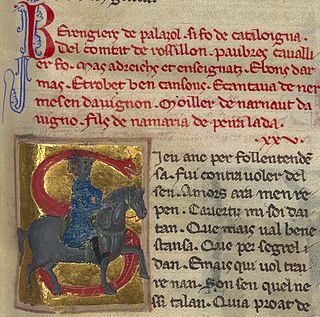
Berenguier de Palazol, Palol, or Palou was a Catalan troubadour from Palol in the County of Roussillon. Of his total output twelve cansos survive, and a relatively high proportion—eight—with melodies.
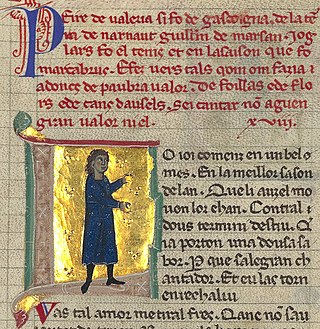
Peire de Valeira, Valeria, or Valera was a Gascon troubadour. Since troubadour poetry probably originated in northwest Aquitaine and first spread—within a generation—south into Gascony, Peire was one of the earliest troubadours. Only two of his poems survive, one canso and one cobla.

Peire Raimon de Tolosa was a troubadour from the merchant class of Toulouse. He is variously referred to as lo Viellz and lo Gros, though these are thought by some to refer to two different persons. On the other hand, lo Viellz could refer to his being of an early generation of troubadours. Eighteen of Peire Ramon's poems survive, one canso with a melody.
Hugh IV, of the House of Millau, was the Count of Rodez and Viscount of Carlat and Creyssel from 1221 until his death. He was the son of Henry I of Rodez and Algayette of Scorailles.
Peirede la Mula was an Italian troubadour. Of his writings a pair of couplets and one sirventes are all that survive. According to his vida, he was a joglars and trobaire (troubadour) who stayed for a long time in Montferrat, Cortemilia, and the Piedmont at the court of Ottone del Carretto. This places Peire's activity before 1209, when Ottone lost Cortemilia.

Guilhem Ademar was a troubadour from the Gévaudan in France. He travelled between the courts of Albi, Toulouse, Narbonne, and Spain. He achieved fame enough during his life to be satirised by the nobleman and monk, Monge de Montaudon. Guilhem entered holy orders towards the end of his life. Sixteen poems—fourteen cansos, a sirventes, and a partimen with Eble d'Ussel—form his surviving corpus. His cansos are his most famous pieces. Usually humorous, several mock the poetry of Ademar's more illustrious contemporary Arnaut Daniel. One canso survives with a tune.

An ensenhamen was an Old Occitan didactic poem associated with the troubadours. As a genre of Occitan literature, its limits have been open to debate since it was first defined in the 19th century. The word ensenhamen has many variations in old Occitan: essenhamen, ensegnamen, enseinhamen, and enseignmen.
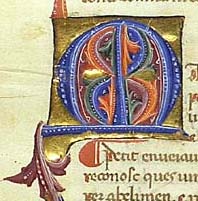
The Cançoner Gil is an Occitan chansonnier produced in Catalonia in the middle of the 14th century. In the systematic nomenclature of Occitanists, it is typically named MS Sg, but as Z in the reassignment of letter names by François Zufferey. It is numbered MS 146 in the Biblioteca de Catalunya in Barcelona, where it now resides.
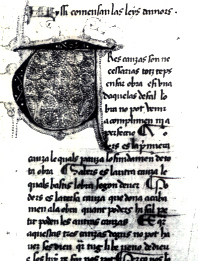
The Consistori del Gay Saber was a poetic academy founded at Toulouse in 1323 to revive and perpetuate the lyric poetry of the troubadours.
The Cançoneret de Ripoll, now manuscript 129 of Ripoll in the Arxiu de la Corona d'Aragó, is a short Catalan-Occitan chansonnier produced in the mid-fourteenth century but after 1346, when Peter IV of Aragon held a poetry competition which is mentioned in the chansonnier. Influenced by Cerverí de Girona, the chansonnier and its ideology serve as transition in the history of Catalan literature between the dominance of the troubadours and the new developments of Ausiàs March.

A torneyamen or certamen was a lyric genre of the troubadours of the thirteenth century. Closely related to the tenso, a debate between two poets, and the partimen, a question posed by one poet and another's response, the torneyamen took place between several poets, originally usually three. The first three-way tenso was initiated by Raimbaut de Vaqueiras with Ademar de Peiteus and Perdigon. These wider tensos only became known as torneyamens later. A tenso or partimen that was submitted to another troubadour for adjudication may have a poetic jutjamen (judgement) attached to it and so may be considered as a torneyamen between three. The torneyamen, like the related debate forms, was probably especially common at contests, such as floral games and puys. Many such tensos and partimens come with attached jutjamens rendered in verse, as in the example Senyer Bernatz, dues puncelhas say cited below.
Duran Sartor de Paernas or Duran Sartre de Carpentras was a Provençal troubadour from Pernes near Carpentras. The nickname sartor means "tailor". Two sirventes have been attributed to him, both reflect opposition to the royal crusade in Occitania: "Vil sirventes leugier e venassal" was written towards 1210, certainly before 1220, and "En talent ai qu'un sirventes encoc," which was written in 1242, during the Saintonge War. Although Duran criticises the crusade against alleged heretics, he encourages further efforts at crusading against Muslims.










